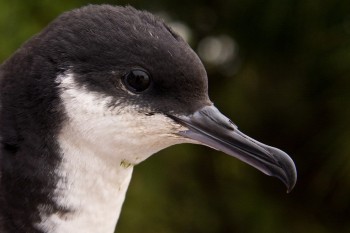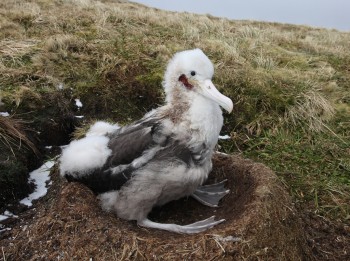Ross Wanless (BirdLife South Africa) and Wiesława Misiak (ACAP Secretariat) presented a document (WPEB12-28) at the 12th Meeting of the Working Party on Ecosystems and Bycatch (WPEB12) of the Indian Ocean Tuna Commission (IOTC) held in Victoria, Mahé, Seychelles last week. The meeting document gave an update to the status of seabirds, including ACAP-listed albatrosses and petrels, within the IOTC area.

Amsterdam Albatross, photograph by Scott Shaffer
The document’s abstract follows:
“New data on the status of albatrosses and petrels, the seabird most at risk from bycatch in tuna longline fisheries, are presented. On the whole, downward population trends continue, giving cause for serious concerns and highlighting the need to continue and increase efforts from longline fleets to prevent seabird bycatch. New information on Tristan Albatross Diomedea dabbenena highlights the Indian Ocean as an important part of this Critically Endangered albatross’s foraging range. Several species, notably Amsterdam Albatross D. amsterdamensis and Black-browed Albatross Thalassarche melanophris have undergone strong recoveries in recent years, possibly reflecting improved use of seabird bycatch mitigation measures.”
ACAP was represented at the meeting by Anton Wolfaardt, Convenor of ACAP’s Seabird Bycatch Working Group (click here).
Click here to access other seabird papers presented at the Seychelles meeting.
Reference:
Wanless, R.M. & Misiak, W. 2016. A status update of seabirds in the IOTC area. IOTC-2016-WPEB12-28. 7 pp.
John Cooper, ACAP Information Officer, 23 September 2016

 English
English  Français
Français  Español
Español 


